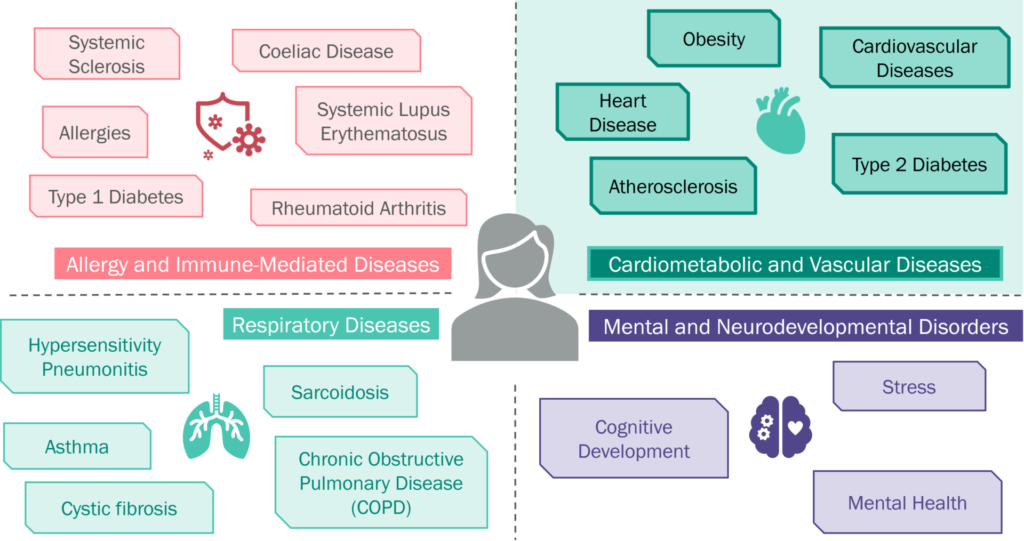Health impacts of exposome research
Together the EHEN projects are studying how exposures to different environments, along with the biological responses to these exposures at critical windows during the life-course, can translate into adverse health factors.
Each project is studying different environments and diseases, however collectively we will gather and assess evidence to further understand the human exposome. Moving away from studying ‘one exposure, one disease’ will enable us to provide and appraise the body of evidence to support policy making.
However, the evolution of exposome research means that policymakers will need to work together in a similar, holistic way. To effectively prevent and treat disease, policymakers at international, European, national, and local level and from multiple fields will need to translate the evidence into exposome-type policies.
Health is not only relevant to the medical field and related health policies but many other types of policy. For example, asthma cannot just be tackled by health policymakers, input and action is also required from policymakers in education, local planning, and of course, the environment. It is essential that there is joined up decision making to improve the health of European citizens.
The diseases studied by EHEN projects come under four health areas: allergy and autoimmune diseases, cardio-metabolic and vascular diseases, respiratory diseases, and mental and neurodevelopmental diseases.
Diseases and health disorders studied across EHEN projects

This figure is for illustrative purposes only. Some diseases may fall across more than one area.
LongITools is focused on cardiometabolic and cardiovascular diseases, including obesity, type 2 diabetes, heart disease and atherosclerosis. These are explained in more detail below:
Pre-obesity (or overweight) and obesity are defined as abnormal or excessive fat accumulation that presents a risk to health.
Type 2 diabetes is a chronic disease where the insulin your pancreas makes can’t work properly, or your pancreas can’t make enough insulin. This means blood glucose (sugar) levels keep rising. Hyperglycaemia, also called raised blood glucose or raised blood sugar, is a common effect of uncontrolled diabetes and over time leads to serious damage to many of the body’s systems, especially the nerves and blood vessels.
Cardiovascular disease is a general term for conditions affecting the heart or blood vessels. There are four main types of cardiovascular disease; coronary heart disease, strokes, peripheral arterial disease and aortic disease.
Coronary heart disease occurs when the flow of oxygen-rich blood to the heart muscle is blocked or reduced. A stroke is where the blood supply to part of the brain is cut off. Peripheral arterial disease occurs when there’s a blockage in the arteries to the limbs, usually the legs. Aortic diseases are a group of conditions affecting the aorta. The aorta is the largest blood vessel in the body, which carries blood from the heart to the rest of the body.
Atherosclerosis is a condition where arteries (the blood vessels that deliver oxygen-rich blood from the heart to the tissues of the body) become clogged with fatty substances called plaques. These plaques cause the arteries to harden and narrow, restricting the blood flow and oxygen supply to vital organs, and increasing the risk of blood clots that could potentially block the flow of blood to the heart or brain.
Disease prevalence in Europe

To find out more about the diseases being studied across EHEN, read the latest EHEN newsletter.
References
1https://www.who.int/europe/publications/m/item/obesity-in-the-who-european-region-factsheet
2https://diabetesatlas.org/atlas/tenth-edition/
3https://ehnheart.org/cvd-statistics/cvd-statistics-2017.html